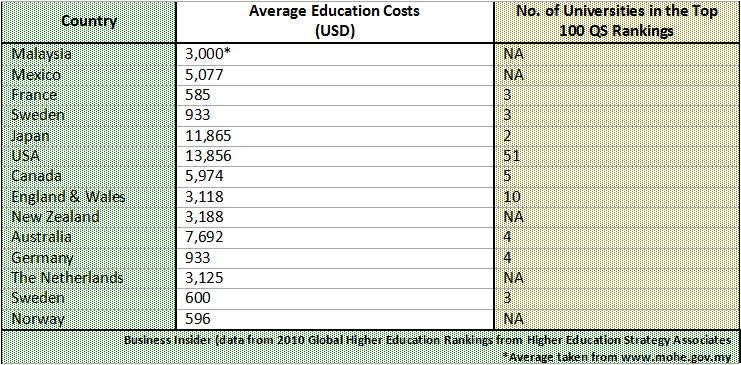Are Malaysian private universities losing their attractiveness?

Afterschool Team
February 14, 2014
Amidst reforming higher education systems, Malaysia's private higher education is experiencing a setback.
Recently, the Higher Education and Scientific Research Ministry of Yemen made a remark that Malaysian private universities were costly and of poor quality. This has led to their decision to put an end to new Yemeni government scholarshipsto private Malaysian universities and withdraw financial support from students at any level (graduate or undergraduate) if their academic performance has been less than excellent.
There are about 9,000 Yemeni students studying in Malaysia with about 4,000 of them enrolled in private institutions of higher learning. Presently, Malaysia's foreign student population is nearing 100,000, according Education Malaysia Global Services' website.
Cost of attending a public Malaysian university is approximately USD1,500 (RM5,00) per year, while private university education costs about USD4,500 (RM15,000) per year. Foreign students studying in Malaysian private universities pay a higher fee, which is at least 50 per cent more. Even then, this is much lower than the fees of other countries (see table below):
Note: Table below shows the average education costs of public and private universities in different countries in 2010. Please note the prices may have changed since then. Industry observers speculate an increase between 5% to 7% annually in education costs in the UK, Australia, Canada and the US.
Faulty screening processes; Weak financial support
In early 2013, reports appeared of Yemeni students, studying in Algeria, Egypt, Russia, Lebanon, India and Malaysia protesting on the amount of financial aid given by the Yemeni government. Some of these students did not go through rigorous screening by the agents in Yemen, claims the Yemeni government. After students enrol at a private university, they ask the Yemeni government to pay for their full tuition and fees.
However, the government can only give USD1,500 per student plus monthly stipend of USD300, leaving them to make up the difference. Some students have reported to be in debt and had to shift their focus to finding work instead of acing exams.
Afterthought...
Maintaining the attractiveness of private Malaysian higher education can pose a challenge, as it is a relative and elusive term. Its attractiveness has different senses in different contexts and at different levels of analysis, and for different countries. Nevertheless, universities need to be attractive to appeal to increasingly differentiated student populations together with their increasingly differentiated needs. Malaysia is banking on the private sector to contribute at least half of the gross national income for the education sector by 2020, with the other half from the public sector.



